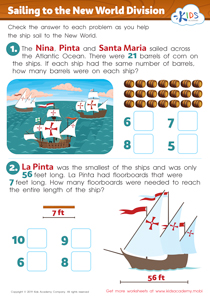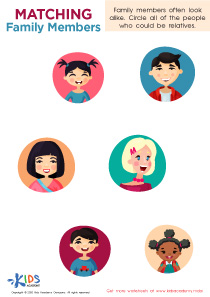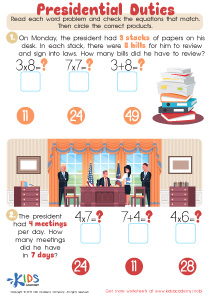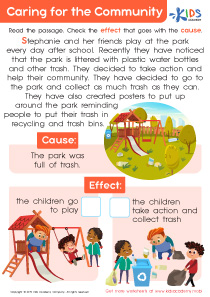Understanding communities Social Studies Worksheets for Ages 5-8
4 filtered results
-
From - To
"Understanding Communities Social Studies Worksheets for Ages 5-8" offer engaging activities designed to teach young learners about the world around them. These fun and educational resources help children explore various types of communities, their roles, and how they work together. Perfect for home or classroom use, the worksheets cover important skills such as critical thinking, problem solving, and the importance of diversity. Boost your child's social understanding with beautifully illustrated sheets that make learning about neighborhoods and communities a delightful experience. Join us in laying the foundation for responsible, aware, and well-rounded individuals!
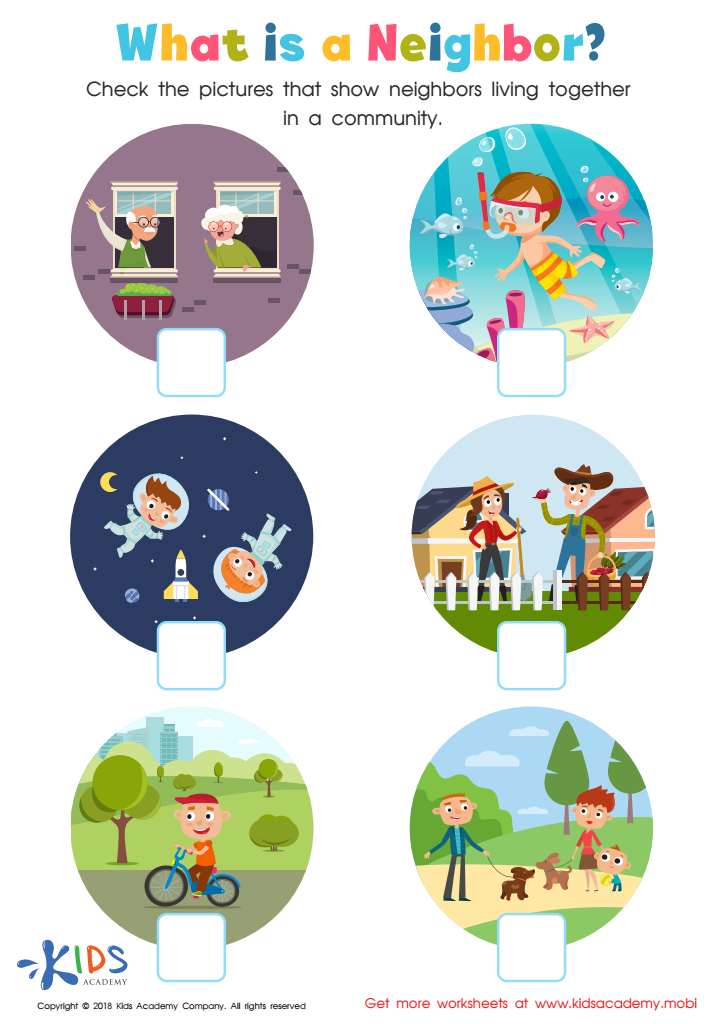

What is a neighbor Worksheet
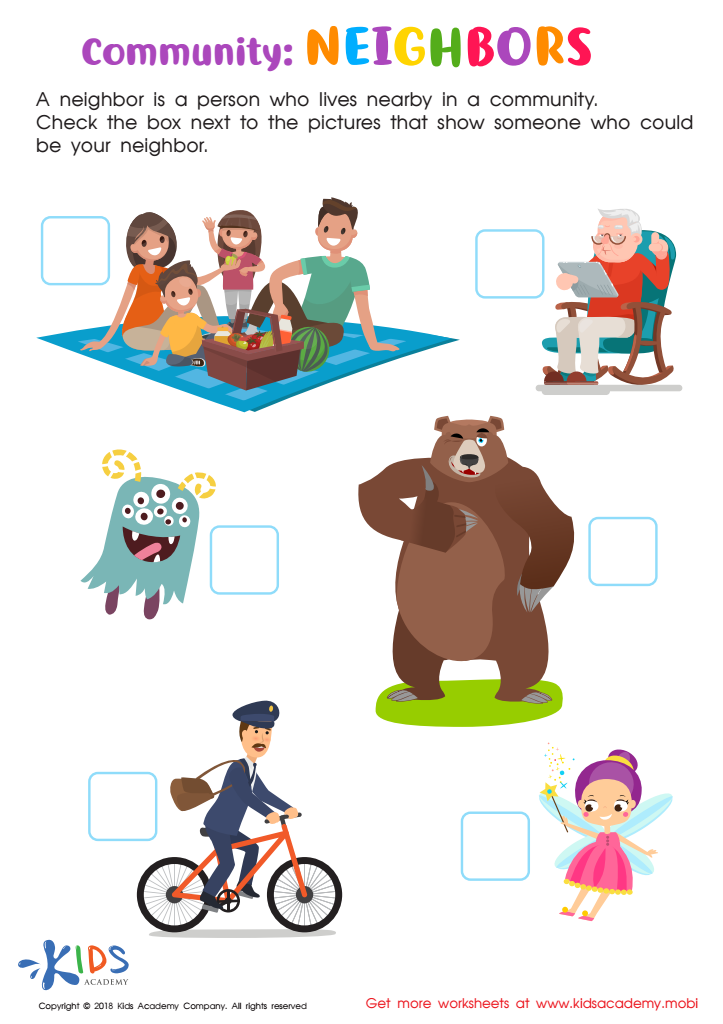

Community: Neighbors Worksheet
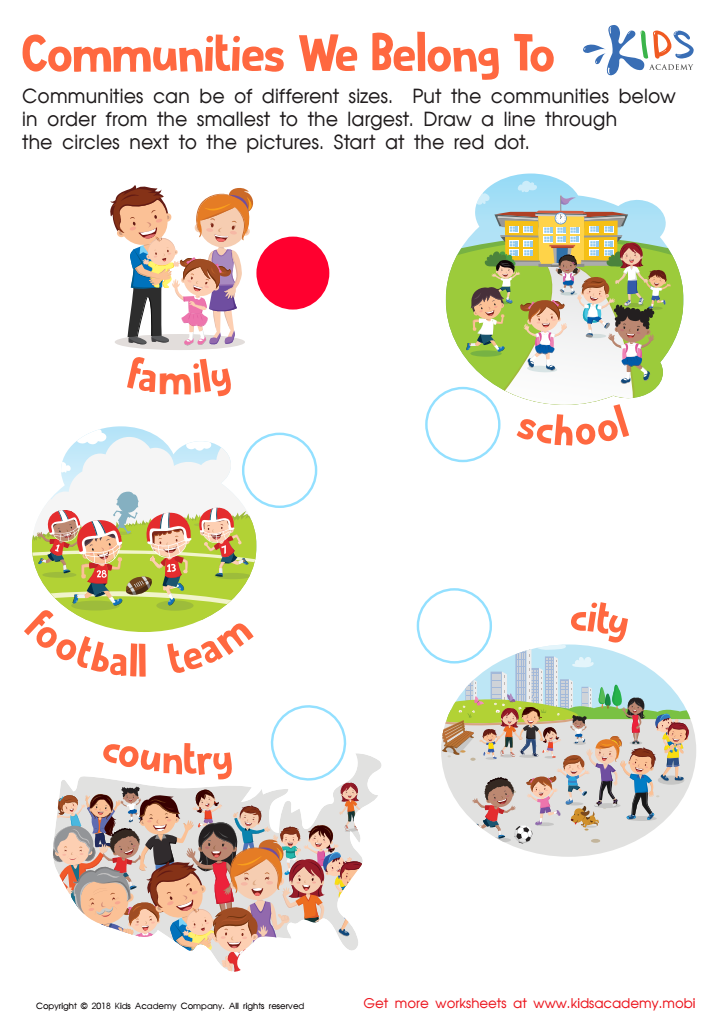

Communities We Belong to Worksheet
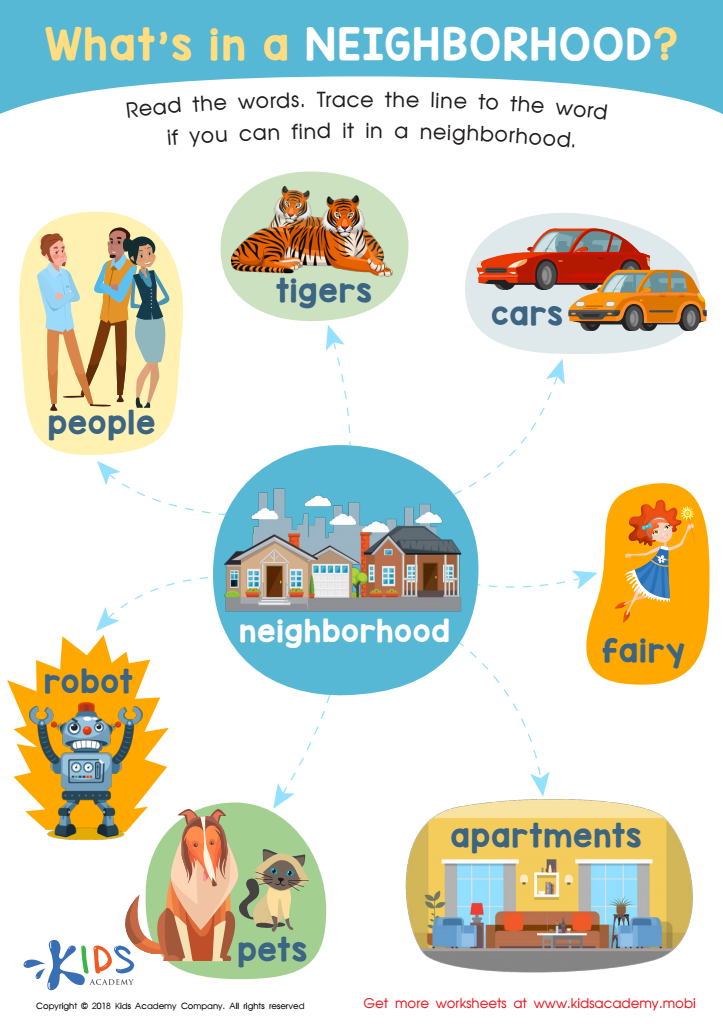

What's in a Neighborhood? Worksheet
Understanding communities is crucial for young children, as it lays the foundation for their social development and civic understanding. For ages 5-8, the concept of community helps children see beyond their immediate family and come to recognize the various roles and relationships that exist in the larger world around them. Parents and teachers should prioritize this facet of Social Studies because it helps children appreciate diversity, empathy, and cooperation.
At this formative stage, children are highly impressionable. By learning about communities, they begin to understand the dynamics of teamwork and shared responsibilities. This understanding fosters essential social skills such as communication, problem-solving, and respect for others' viewpoints. Moreover, it teaches them that everyone plays a significant role in making a community function, whether it's the policeman, the teacher, or the shopkeeper.
Additionally, early exposure to the idea of communities instills a sense of belonging and identity. It encourages children to feel connected to something larger than themselves, promoting feelings of safety and security. Parents and teachers who focus on this part of Social Studies effectively equip children with the tools they need to navigate and contribute positively to their own communities as they grow. This foundation, therefore, helps in nurturing responsible, informed, and engaged future citizens.

 Assign to My Students
Assign to My Students




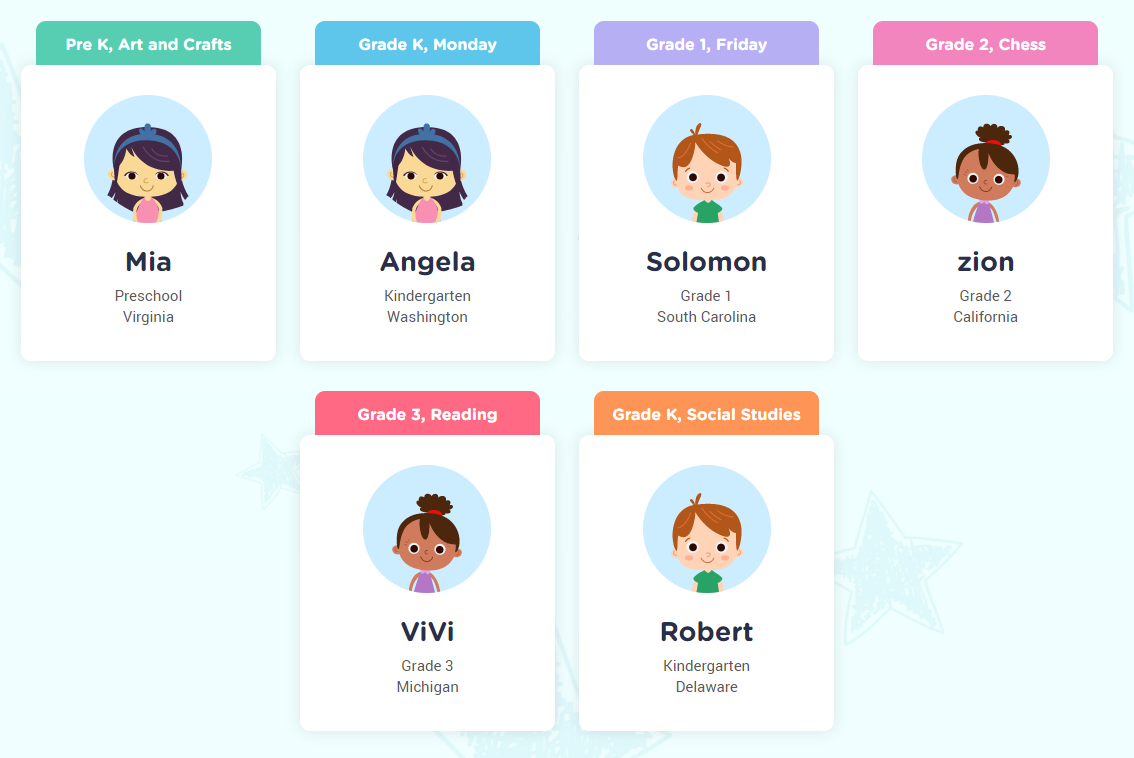
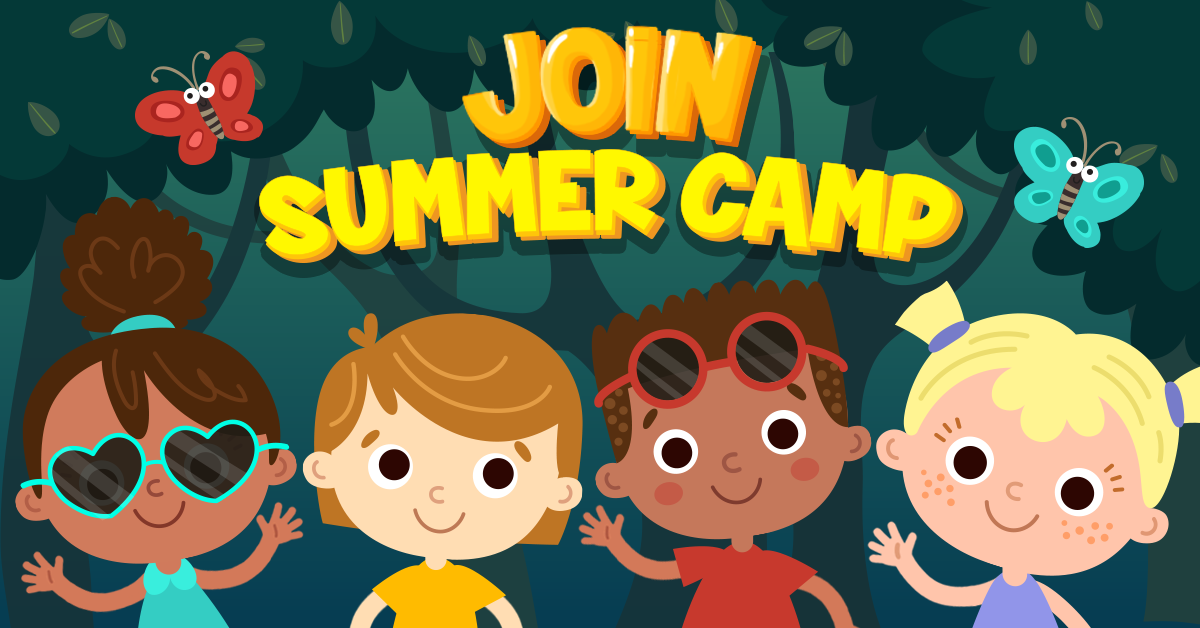
.jpg)




